Authors: Quinton Nannet, MD, (Emergency Medicine Resident, Atrium Health’s Carolinas Medical Center), Christine Murphy, MD (Emergency Medicine Attending, Medical Toxicologist, Atrium Health’s Carolinas Medical Center) // Reviewed by: James Dazhe Cao, MD (@JamesCaoMD, Associate Professor of EM, Medical Toxicology, UT Southwestern Medical Center, Dallas, TX); Alex Koyfman, MD (@EMHighAK); and Brit Long, MD (@long_brit)
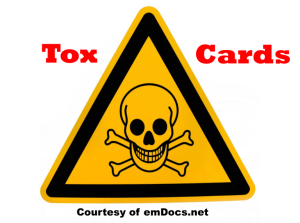
Case:
A 34-year-old male presents to the emergency department (ED) via emergency medical services (EMS) for near syncope and altered mental status. The patient was picked up at a popular night club where his friends note he had been sniffing amyl nitrate “poppers.” EMS calls out that he is somnolent with non-bloody emesis on his shirt. The EMS crew notes the patient is hypoxic to the 80s and looks blue.
Initial ED vitals were HR 110; BP 65/48; RR 24 breaths/min; O2 sat 85% on 15L non-rebreather; Temp 37.8 °C. Physical exam reveals a patient who can speak with clear lung sounds, 2+ pulses, and a GCS of 15 but with marked cyanosis and dusky skin.
When drawing labs, the patient’s blood is appreciably dark. Chest x-ray and EKG are unremarkable. His venous blood gas demonstrates a pH of 7.41, pCO2 38, pO2 105, and methemoglobin of 35%.
Questions:
- What is the cause and mechanism of methemoglobinemia?
- How does methylene blue treat methemoglobinemia?
- How can methylene blue be used as a vasopressor in the ED?
- What are some current alternative uses of methylene blue?
Background: Methemoglobinemia1
- Methemoglobinemia occurs when the iron molecule in hemoglobin (Hgb) becomes oxidized from the ferrous (Fe2+) to ferric (Fe3+) state preventing it from being able to bind oxygen
- This resultant oxidation shifts the oxygen dissociation curve to the left, impairing oxygen distribution reducing the amount of functional hemoglobin
- Subsequently, patients with methemoglobinemia present with cyanosis, somnolence, dyspnea, and tachycardia
- As methemoglobin levels rise, the oxidative stress can also lead to hemolysis; particularly when reducing agents such as glutathione cannot be repleted, such as in glucose-6-phosphate-dehydrogenase (G6PD) deficiency
- The key diagnostic features include:
- Refractory pulse oximetry suggesting hypoxemia as the sPO2 will often remain < 85% despite 100% FiO2
- Cyanosis occurs despite an O2 saturation of ~ 80%, whereas cyanosis normally would occur < 75%
- Brown blood, as it cannot absorb oxygen and return to a normal red hue
- Causes of methemoglobinemia include anything that causes increased oxidative stress:

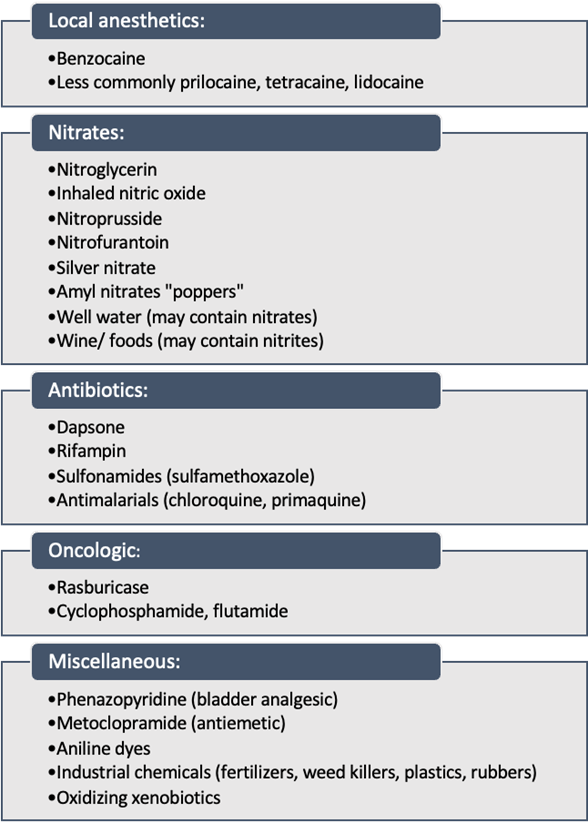
Figure 1. Methemoglobin-inducing agents. Image adapted from The Internet Book of Critical Care 2
Methylene Blue to Treat Methemoglobinemia
- Mechanism of Action:
- Methylene blue acts as a carrier for electrons to aid in reduction of ferric iron (Fe3+) back to ferrous iron (Fe2+)
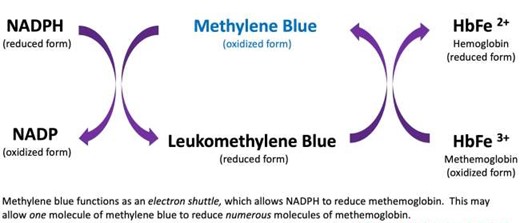
Figure 2. Methylene blue redox cycling. Image courtesy of The Internet Book of Critical Care (IBCC)2
- Indications:
- Symptomatic methemoglobinemia
- Neurologic: dizziness, headache, syncope, lethargy, coma, seizures
- Cardiovascular: dyspnea, exercise intolerance, fatigue, dysrhythmia, acidosis
- Methemoglobin level >30%
- Of note, cyanosis as a lone symptom is not an indication for treatment, as skin discoloration can be seen at methemoglobin levels of 3-20%
- Relative Contraindications:
- G6PD deficiency
- G6PD reduces NADP to NADPH
- NADPH in turn repletes oxidized glutathione stores in cells to limit free radical damage
- The G6PD pathway is the only source of glutathione in red blood cells making G6PD deficient patients more susceptible to oxidative stress which can lead to hemolysis
- NADPH is also needed to convert methylene blue to leukomethylene blue, which is the form that reduces methemoglobin (Fe3+) to hemoglobin (Fe2+), as illustrated in the image above. Thus, if NADPH stores are depleted due to ongoing oxidative stress, methylene blue is theoretically less beneficial
- Additionally, since methylene blue is an oxidizing agent, high doses of methylene blue could precipitate hemolysis through further oxidative stress
- Given the variability in G6PD activity, even in patients with “deficiency”, it is reasonable to consider treating with a small dose of methylene blue in patients with severe methemoglobinemia
- Alternative treatment options in patients with G6PD deficiency include exchange transfusions and hyperbaric oxygen3
- Ascorbic acid, frequently touted as a treatment for methemoglobin, can cause hemolysis in G6PD deficient patients and should not be used
- Methylene blue and serotonergic medications
- Methylene blue acts as a MAO-A inhibitor, meaning it blocks the degradation of amines (serotonin, norepinephrine, and dopamine)4
- When given in high doses at one time or over an extended duration methylene blue can precipitate serotonin syndrome
- This typically occurs in patients taking other medications with serotonin reuptake inhibition or those who have not had a long enough washout period after discontinuing a serotonin reuptake inhibitor5
- In most case reports noting this effect, patients received > 7 mg/kg. However, if a patient is on multiple medications blocking serotonin reuptake or increasing serotonin in the synapse, this could happen at lower doses.
- Again, this is a relative contraindication, as the risks of shock may outweigh the risks of serotonin syndrome
- Dosing3:
- 1-2 mg/kg IV over 5 minutes with a max initial dose of 100 mg for pediatric and adult patients
- For neonates, smaller doses of 0.3 mg/kg to 1 mg/kg are effective
- Most patients should improve clinically within minutes, and methemoglobin levels should reduce to < 10% within an hour
- If symptoms still persistent after 60 minutes, an additional 1 mg/kg can be given
- Failure to respond to two doses of 1 mg/kg should raise questions of G6PD deficiency or an alternative diagnosis
- Repeat dosing may be required if there is continued exposure to the cause of the patient’s methemoglobinemia, i.e., the drug continues to be absorbed or has a slow elimination time like dapsone
- Side effects:
- Transiently and falsely lowered pulse oximetry readings during administration
- Blue-green urine discoloration
- Infusion site discomfort
- The most common side effects noted in Goldfrank’s by healthy individuals receiving doses > 2 mg/kg were: extremity and back pain, chromaturia, dizziness, diaphoresis, nausea, skin discoloration, and headache3
- Doses > 7 mg/kg are typically thought as an upper limit and can potentiate further methemoglobinemia
- G6PD deficiency
- Symptomatic methemoglobinemia
Methylene Blue to Treat Vasoplegic Shock
- Mechanism of Action: Methylene blue causes vasoconstriction by inhibiting nitric oxide synthase and the conversion of guanine triphosphate to cGMP
- Indications: Distributive shock states
- Vasoplegia following cardiac surgery6, 7
- Sepsis8
- Dosing:
- Varies depending on sources and hospital practices:
- Bolus: 1-2 mg/kg IV
- If improvement noted, consider infusion from 0.5 – 2 mg/kg/hour
- Varies depending on sources and hospital practices:
Alternative Uses for Methylene Blue:
- Methylene Blue for Anaphylaxis9, 10

Figure 3. Methylene blue inhibits guanylate cycle and prevents vasodilatation. Image created by Dr. Nannet, adapted from Circulation Research11
-
- The pathophysiology of anaphylaxis is multifactorial, but it is known that the release of nitric oxide plays a large component
- The inhibition of guanylate cyclase by methylene blue reduces the vasodilatory effects of nitric oxide and can be considered in treating the hypotension associated with anaphylaxis
- Methylene Blue for vasoplegic shock from metformin toxicity12,13

Figure 4. Electron transport chain in the mitochondria. Image courtesy of Fvasconcellos 22:35, 9 September 2007 (UTC), Public domain, via Wikimedia Commons
-
- One of proposed mechanisms of metformin toxicity is via inhibition of the mitochondrial respiratory chain complex I in the electron transport chain preventing aerobic metabolism and promoting anaerobic metabolism and lactic acidosis, (http://www.emdocs.net/toxcard-metformin-toxicity/)
- Methylene blue is theorized to act as a NADH electron acceptor, bypassing the electron transport chain when inhibited by metformin
Clinical Pearls
- Methemoglobinemia is the result of hemoglobin oxidation which prevents oxygen binding resulting in refractory hypoxemia, cyanosis, and brown or “chocolate” blood
- The treatment for methemoglobinemia is methylene blue which acts as an electron shuttle to reduce oxidized hemoglobin
- Methylene blue is relatively contraindicated in patients with G6PD deficiency due to the risk of hemolysis
- Methylene blue is dosed at 1-2 mg/kg IV over 5 minutes for methemoglobinemia, or you can give a bolus of 1-2 mg/kg and infusion of 0.5-2 mg/kg/hour for refractory vasoplegic shock
References
- Agarwal A.M., & Prchal J.T. (2015). Methemoglobinemia and other dyshemoglobinemias. Kaushansky K, & Lichtman M.A., & Prchal J.T., & Levi M.M., & Press O.W., & Burns L.J., & Caligiuri M(Eds.), Williams Hematology, 9e. McGraw Hill. https://accessmedicine.mhmedical.com/content.aspx?bookid=1581§ionid=101238113
- Farkas, J. (2021, November 30). Methemoglobinemia. EMCrit Project. Retrieved March 27, 2022, from https://emcrit.org/ibcc/methemoglobinemia/
- Hoffman RS, Nelson LS, Goldfrank LR, Howland MA, Lewin NA, Smith SW. Goldfrank’s Toxicologic Emergencies, Eleventh Edition. McGraw-Hill Education; 2019.
- Ramsay, R. R., Dunford, C., & Gillman, P. K. (2007). Methylene blue and serotonin toxicity: inhibition of monoamine oxidase A (MAO A) confirms a theoretical prediction. British journal of pharmacology, 152(6), 946–951. https://doi.org/10.1038/sj.bjp.0707430
- Ng BK, Cameron AJ. The role of methylene blue in serotonin syndrome: a systematic review. Psychosomatics. 2010 May-Jun;51(3):194-200. doi: 10.1176/appi.psy.51.3.194. PMID: 20484716.
- Levin R, Degrange M, Bruno G, et al. Methylene blue reduces mortality and morbidity in vasoplegic patients after cardiac surgery.Ann Thorac Surg. 2004;77(2):496-499. https://www.ncbi.nlm.nih.gov/pubmed/14759425.
- Mehaffey JH, Johnston LE, Hawkins RB, Charles EJ, Yarboro L, Kern JA, Ailawadi G, Kron IL, Ghanta RK. Methylene Blue for Vasoplegic Syndrome After Cardiac Operation: Early Administration Improves Survival. Ann Thorac Surg. 2017 Jul;104(1):36-41. doi: 10.1016/j.athoracsur.2017.02.057. Epub 2017 May 24. PMID: 28551045; PMCID: PMC5523819.
- Kwok ES, Howes D. Use of methylene blue in sepsis: a systematic review. J Intensive Care Med. 2006 Nov-Dec;21(6):359-63. doi: 10.1177/0885066606290671. PMID: 17095500.
- Evora PR, Simon MR. Role of nitric oxide production in anaphylaxis and its relevance for the treatment of anaphylactic hypotension with methylene blue. Ann Allergy Asthma Immunol. 2007 Oct;99(4):306-13. doi: 10.1016/S1081-1206(10)60545-5. PMID: 17941276.
- Rodrigues JM, Pazin Filho A, Rodrigues AJ, Vicente WV, Evora PR. Methylene blue for clinical anaphylaxis treatment: a case report. Sao Paulo Med J. 2007 Jan 4;125(1):60-2. doi: 10.1590/s1516-31802007000100012. PMID: 17505688.
- Friebe A, Koesling D. Regulation of nitric oxide-sensitive guanylyl cyclase. Circ Res. 2003 Jul 25;93(2):96-105. doi: 10.1161/01.RES.0000082524.34487.31. PMID: 12881475.
- Warrick BJ, Tataru AP, Smolinske S. A systematic analysis of methylene blue for drug-induced shock. Clin Toxicol (Phila). 2016 Aug;54(7):547-55. doi: 10.1080/15563650.2016.1180390. Epub 2016 May 19. PMID: 27196698.
- Graham RE, Cartner M, Winearls J. A severe case of vasoplegic shock following metformin overdose successfully treated with methylene blue as a last line therapy. BMJ Case Rep. 2015 Jul 6;2015:bcr2015210229. doi: 10.1136/bcr-2015-210229. PMID: 26150642; PMCID: PMC4493209.


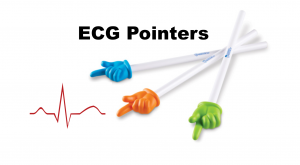


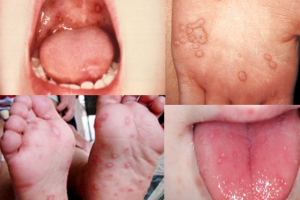


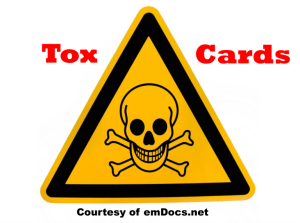
1 thought on “ToxCard: Methylene Blue”
Pingback: Quiz 173, December 30th, 2022 – The FOAMed Quiz